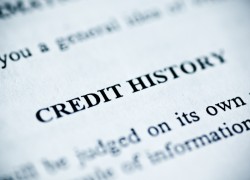
OVERVIEW
A credit report contains four basic parts: identifying information, credit history, public records, and inquiries. It’s important to look closely at each section to determine whether or not the information contained in the credit report is correct.
—————–
A credit report contains four basic parts: identifying information, credit history, public records, and inquiries. It’s important to look closely at each section to determine whether or not the information contained in the credit report is correct.
Checking your credit report at least once a year is not only a good idea, but crucial to supporting your financial health. Checking your credit report is similar to getting an annual physical at the doctor’s office. Checking your credit report helps ensure that you don’t find yourself in trouble with your credit bureau before it’s too late.
You can get one copy of your credit report at www.annualcreditreport.com from each of the three credit bureaus – Equifax, TransUnion, and Experian. Each of those credit reports may contain different information so it’s important to obtain a credit report from each credit bureau. Creditors voluntarily give information to the credit bureaus and they don’t necessarily report to all three. Getting a credit report from each of the credit bureaus (Equifax, Experian and TransUnion) will enable you to compare and evaluate the credit reports side by side.
Identifying Information
The identifying information on your credit report is your personal information, including birth date, present and previous addresses, social security numbers, phone numbers, and employer information. Individuals reporting to the credit bureaus enter this information, so it’s not unusual to have mild variations on the spelling of your name or your phone number. If there are slight variations on the credit report, it’s best to just leave them. If there are gross errors on the credit report, those need to be corrected.
Credit History
Each credit report will contain information about the credit accounts you have had or currently have. Each individual credit account listed on your credit report is called a trade line. Each credit account will have the name of the creditor and your credit account number. The credit account numbers may be scrambled to keep that information secure. As part of the information about each credit account, you’ll find the name or names on the credit account, the date you opened the credit account, the type of credit (mortgage, car loan, revolving credit, etc), the amount of the loan or the credit limit, the payment amount or how much you still owe, the status of the account (open, closed, inactive, etc), and how well you’ve paid on the account. On Experian’s credit report, you’ll find these items written out in a straightforward manner. On the other credit bureau’s reports, you’ll find payment codes you’ll have to use a key to figure out.
Public Record
This section of your credit report contains any matters of financial public record. It will contain records of bankruptcies, tax liens, or judgments. The things listed in this part of your credit report are very important because they can have a very negative impact on your credit rating.
Inquiries
This part of the credit report lists anyone who has asked to look at your credit history. Inquiries are listed as two types – hard inquiries and soft inquiries. Hard inquiries on your credit report are ones you initiate by filling out a credit application. Soft inquiries are inquiries from companies looking to send out promotional information to a “pre-qualified†group of people.

![Reblog this post [with Zemanta]](http://img.zemanta.com/reblog_e.png?x-id=363e26d2-0462-4b17-afc4-7d82393bf2cb)
